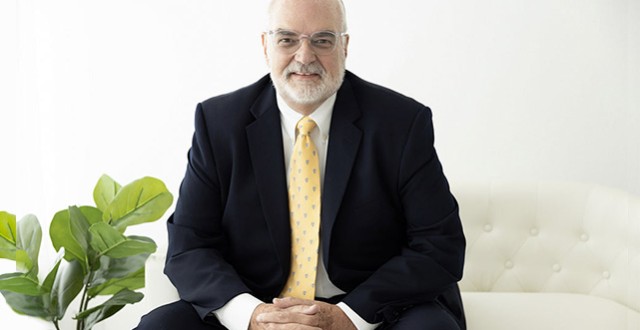
- Mediation
- Arbitration
- Court Neutrals
- Online Dispute Resolution
- Technology
- Court Decisions
- More
- Legislation
- Healthcare
- Guest Posts
- John DeGroote
- John C. Fleming
- Rick Freeman
- Professor Peter Friedman
- Honorable W. Royal Furgeson, Jr.
- James M. Gaitis
- Laura A. Kaster
- Professor John Lande
- Philip J. Loree, Jr.
- Michael McIlwrath
- F. Peter Phillips
- Professor Alan Scott Rau
- Professor Thomas J. Stipanowich
- Professor S.I. Strong
- Richard Webb
- Glen M. Wilkerson
- International arbitration
- Regulation
- Sports and Entertainment
- We’re Back!!!!Well, it’s been a while since we published and that is about to change. Since I spent much of last year becoming
 JAMS Welcomes Karl Bayer to its Panel of NeutralsJAMS, the world’s largest private alternative dispute resolution (ADR) provider, is pleased to announce that Karl Bayer
JAMS Welcomes Karl Bayer to its Panel of NeutralsJAMS, the world’s largest private alternative dispute resolution (ADR) provider, is pleased to announce that Karl Bayer Class Action Waivers in Arbitration Agreements: The Twenty-First Century Arbitration Battleground and Implications for the EU CountriesLinda S. Mullenix, Morris & Rita Atlas Chair in Advocacy at the University of Texas School of Law, has written “Class Ac
Class Action Waivers in Arbitration Agreements: The Twenty-First Century Arbitration Battleground and Implications for the EU CountriesLinda S. Mullenix, Morris & Rita Atlas Chair in Advocacy at the University of Texas School of Law, has written “Class Ac Picking the Proper Technological Tool for Problem-Solving in ArbitrationProfessor Amy J. Schmitz, John Deaver Drinko-Baker & Hostetler Chair in Law and Co-Director of the Translational Data An
Picking the Proper Technological Tool for Problem-Solving in ArbitrationProfessor Amy J. Schmitz, John Deaver Drinko-Baker & Hostetler Chair in Law and Co-Director of the Translational Data An
Recent Posts
Study Captures Nurses’ Experiences with Disruptive Behavior
By Holly Hayes The Journal of Nursing Care Quality published this month the results of a qualitative study titled “Hospital RNs’ Experiences with Disruptive Behavior”. The study describes the different types of disruptive behavior the study group of registered nurses had experienced on the front lines of patient care, identifies the triggers of this behavior, learns how nurses respond to disruptive behavior and identifies the impact of this behavior on the individual and the organization. Data was gathered through focus groups conducted with registered nurses (RNs). You may purchase the article here. Types of Disruptive Behavior Three themes of disruptive behavior emerged: incivility (described as rude or disrespectful behavior), psychological aggression (for example: intimidation, professional disregard or verbal aggression) and physical violence. Triggers of Disruptive Behavior Nurses were asked to identify the triggers of disruptive behavior and three themes emerged: intrapersonal triggers (occurring within the individual — for example, lack of competency or fatigue), interpersonal triggers (occurring between two people — for example, the use of status to control others or communication issues resulting in a lack of information to care for a patient), and organizational triggers (systems, processes or culture of an organization — for example, high census or patient flow issues). Intrapersonal triggers were reported as the main reason for disruptive behavior. For these triggers, corrective action for the disruptive behavior often lies within the individual and requires a recognition of how the individual’s internal state contributes to the disruptive behavior. The low frequency of interpersonal triggers was an unexpected finding considering the importance of communication and teamwork in the delivery of patient care. Response to Disruptive Behavior Study participants identified three categories where they addressed disruptive behavior in a positive way: address the conflict constructively, analyze the situation and seek support for the behavior. Nurses on one patient care unit developed a constructive strategy by creating a penalty flag that team members could use when disruptive behavior was occurring to call a time out. This was described as empowering the staff to develop norms for acceptable behavior. Another study participant described how she steps back from the conflict and analyzes the event to help develop personal strategies for addressing these behaviors in the future. Nurses also described asking for support from peers, managers, staff assistance programs, or security or by using the organizational chain of command to deal with disruptive behavior. Impact of Disruptive Behavior “Disruptive behavior affects the RN, patient, and practice setting. The nurses described impacts such as being distracted from patient care, taking a physical or emotional toll on them personally, and creating conflicts for them between meeting patient care needs and meeting the operational needs of the hospital. They also expressed concerns that disruptive behavior can decrease the quality of care, create risks to patient safety, delay the delivery of care to patients, and disrupt working relationships among team members.” Nurses also discussed the impact of disruptive behavior on retention. Forty-eight percent of participants said they knew a nurse who transferred to another unit or department because of disruptive behavior and thirty-four percent said they knew nurses who had terminated their employment because of disruptive behavior. Next Steps The authors of the study, Jo M. Walrath, PhD, RN; Deborah Dang, PhD, RN, NEA-BC; and Dorothy Nyberg, MS, RN are developing a survey instrument to be “used to conduct a systematic organizational assessment to establish the prevalence of disruptive behavior in the organization and the triggers, responses, and impacts of this behavior on RNs. Findings from this organizational assessment will ultimately determine the nature and type of interventions that will be designed, implemented, and evaluated to effectively manage this phenomenon.” For more on disruptive behavior in health care, read our previous post here. Reference: Jo M. Walrath, PhD, RN; Deborah Dang, PhD, RN, NEA-BC;Dorothy Nyberg, MS, RN. Hospital RNs’ Experiences With Disruptive Behavior A Qualitative Study. J Nurs Care Qual. Vol. 25, No. 2, pp. 105–116. Holly Hayes is a mediator at Karl Bayer, Dispute Resolution Expert where she focuses on mediation of health care disputes. Holly holds a B.A. from Southern Methodist University and a Masters in Health Administration from Duke University. She can be reached at: holly@karlbayer.com.
Continue reading...In Health Reform, the Power of a Positive No
By Holly Hayes Those of us in the mediation field have likely read The Power of a Positive No by William Ury. I was reminded of this book when I read the New York Times article this week, “In Medicine, the Power of No.” See the full article here. William Ury’s preface begins with a discussion of his daughter’s illness and his family’s “long journey through the medical system.” He says, “I realize the process has called on all of the skills I have learned over the years in helping others get to Yes with their negotiation issues. I also realized that, for me personally, the key skill I needed to develop to protect my daughter and our family was saying No.” Everyone says no, the difference for Ury was that “my Nos needed to be nice.” As you might have guessed, David Leonhardt in the New York Times asks, “How can we learn to say no?” The article outlines a three-step process about learning to say no in medicine, more often: The first is learning more about when treatments work and when they don’t. ‘All too often,’ the Institute of Medicine reports, the data is ‘incomplete or unavailable.’ As a result, more than half of treatments lack clear evidence of effectiveness, the institute found. It says the most promising areas for research include prostate cancer, inflammatory diseases, back pain, hyperactivity, and CT scans vs. M.R.I.’s for cancer diagnosis. As part of the health act, a Patient Centered Health Research group will have an annual budget of $600 million. Relative to total health spending, that’s a paltry sum. But it’s real money relative to what’s now being spent on such research. The second step — and maybe the most underappreciated one — is to give patients the available facts about treatments. Amazingly, this often does not happen. ‘People are pretty woefully undereducated about fateful medical decisions,’ says Dr. Michael Barry of the Massachusetts General Hospital, an advocate for sharing more with patients. When patients are given information about potential benefits and risks, they seem to choose less invasive care, on average, than doctors do, according to early studies. Some of them choose home care like https://homecareassistance.com/la-jolla/. Some people, of course, decide that aggressive care is right for them — like the cancer patient (and palliative care doctor) profiled in this newspaper a few days ago. They are willing to accept the risks and side effects that come with treatment. Many people, however, go the other way once they understand the trade-offs. The health act requires Medicare and other agencies to help hospitals and doctors give patients more information — which is practically a no-lose proposition. In the course of receiving more control and more choice, two distinctly American values, patients will probably help hold down costs. The final step is the bluntest. It involves changing the economics of medicine, to reward better care rather than simply more care. Health reform doesn’t go nearly far enough on this score, but it is a start. The tax subsidies for health insurance will shrink, which should help people realize medical care is not free. And doctors who provide good, less expensive care won’t be financially punished as often as they now are. None of these steps will allow us to avoid the wrenching debates that are an inevitable part of health policy. Eventually, we may well have to decide against paying for expensive treatments with only modest benefits. But given how difficult that would be for this country, it makes sense to start with the easier situations — the ones in which ‘no’ really is the best answer for patients. Space will only allow a summary of William Ury’s wise words on this topic. He outlines, “The Three Great Gifts of a Positive No”: According to the sages of ancient India, there are three fundamental processes at work in the universe: creation, preservation, and transformation. Saying No is essential to all three processes. If you can learn to say No skillfully and wisely, you can create what you want, protect what you value, and change what doesn’t work. These are the three great gifts of a Positive No. We welcome your comments on this topic. Holly Hayes is a mediator at Karl Bayer, Dispute Resolution Expert where she focuses on mediation of health care disputes. Holly holds a B.A. from Southern Methodist University and a Masters in Health Administration from Duke University. She can be reached at: holly@karlbayer.com.
Continue reading...ABA 2010 Winners of Mediation Video Contest on YouTube: Honorable Mention (3)
The ABA Section of Dispute Resolution announced the 2010 winners of its First Annual Mediation Video Contest on YOUTUBE. An Honorable Mention Winner was “Mediation Works” submitted by: Peggy Foley Jones, Lissy Gulick, Pat Bambrick, Tod Davies. Check it out: Technorati Tags: ADR, law, arbitration
Continue reading...Medical Staff Standard Includes Conflict Resolution Requirement
By Holly Hayes The Joint Commission Medical Staff Standard MS.01.01.01 has been approved and will go into effect March 31, 2011. See the Standard here. American Medical News summarizes: “The new standard states that the organized medical staff has the primary job of assuring quality and patient safety in the hospital while laying out a mechanism for physicians, the hospital governing body and chief executive to resolve differences over rules, policies and procedures. By spelling out these respective roles and responsibilities, the standard aims to foster collaborative working relationships to improve the quality of care. Medical staffs around the country will have to revise their bylaws in the next year to comply with the standard.” Read more here. With regard to the management of conflict, The Joint Commission introduction to the new standard states: “If conflict arises within the medical staff regarding medical staff bylaws, rules and regulations, or policies, it implements its process for managing internal conflict (see Element of Performance 10 — see below). If conflicts regarding the medical staff bylaws, rules and regulations, or policies arise between the governing body and the organized medical staff, the organization implements its conflict management processes, as set forth in the Leadership chapter.” Element of Performance 10 states: “The organized medical staff has a process which is implemented to manage conflict between the medical staff and the medical executive committee on issues including, but not limited to, proposals to adopt a rule, regulation, or policy or an amendment thereto. Nothing in the foregoing is intended to prevent medical staff members from communicating with the governing body on a rule, regulation, or policy adopted by the organized medical staff or the medical executive committee. The governing body determines the method of communication.” The Joint Commission recognition of the value of teamwork in the medical setting and the mandate for the development of a conflict resolution process is summarized as follows: “This collaborative relationship is critical to providing safe, high quality care in the hospital. While the governing body is ultimately responsible for the quality and safety of care at the hospital, the governing body, medical staff, and administration collaborate to provide safe, quality care. (Please see the Leadership chapter for more discussion of the relationship among the organized medical staff, administration, and governing body.)” See our posts on the Leadership chapter here and here. The requirement that “The organized medical staff has a process which is implemented to manage conflict…” validates the use of ADR techniques in health care. We welcome your comments to this new medical staff standard. Holly Hayes is a mediator at Karl Bayer, Dispute Resolution Expert where she focuses on mediation of health care disputes. Holly holds a B.A. from Southern Methodist University and a Masters in Health Administration from Duke University. She can be reached at: holly@karlbayer.com.
Continue reading...Arbitration
Mediation
Healthcare Disputes
Legal Research
About Disputing
Disputing is published by Karl Bayer, a dispute resolution expert based in Austin, Texas. Articles published on Disputing aim to provide original insight and commentary around issues related to arbitration, mediation and the alternative dispute resolution industry.
To learn more about Karl and his team, or to schedule a mediation or arbitration with Karl’s live scheduling calendar, visit www.karlbayer.com.






